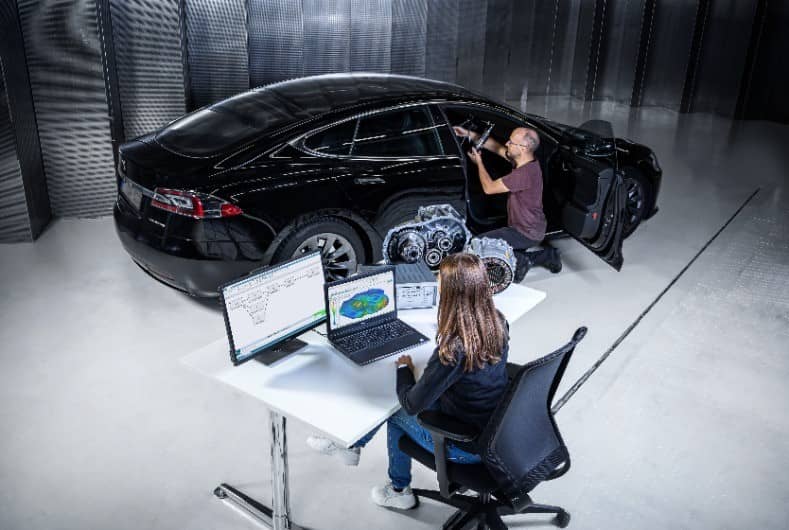Siemens Digital Industries Software now offers NVH prediction functions for motor vehicles in Simcenter. NVH (Noise, Vibration and Harshness) behavior concerns the interior and exterior noise of a vehicle, which can be simulated even before physical prototypes are built. The prediction capabilities cover all powertrain types: Hybrid, all-electric or internal combustion engine (ICE).

The new Simcenter application helps engineers identify potential component NVH issues early by using measured and simulated component models to create a virtual prototype assembly (Image Siemens). Simcenter is part of Xcelerator, Siemens’ integrated portfolio of software, services, and application development.
Vehicle electrification is leading to quieter powertrains than is common in internal combustion vehicles. This means that noise sources such as tires or auxiliary units, for example air conditioning and windshield wipers, are no longer acoustically masked. At the same time, the ever-increasing number of variants in vehicles means that building physical prototypes for each variant within a reasonable time and budget is impossible.
Simcenter uses a systems engineering approach to enable the rapid creation of multiple vehicle variants. System-level component models based on test and/or simulation data are created by NVH experts and published in a library. These use state-of-the-art technologies such as component-based transfer path analysis. It allows designers to characterize NVH sources independently of the final receiver structure to ensure they are validated – scalably and reliably.
The validated components can then be quickly combined by non-NVH experts to map a new variant. NVH evaluation can begin immediately, reducing setup times to a matter of minutes. This system-based approach enables rapid reuse of available data and expertise by a much wider range of users within an organization. Because non-experts can perform NVH prediction studies, it makes it easier to perform NVH assessments at all stages of vehicle development.
